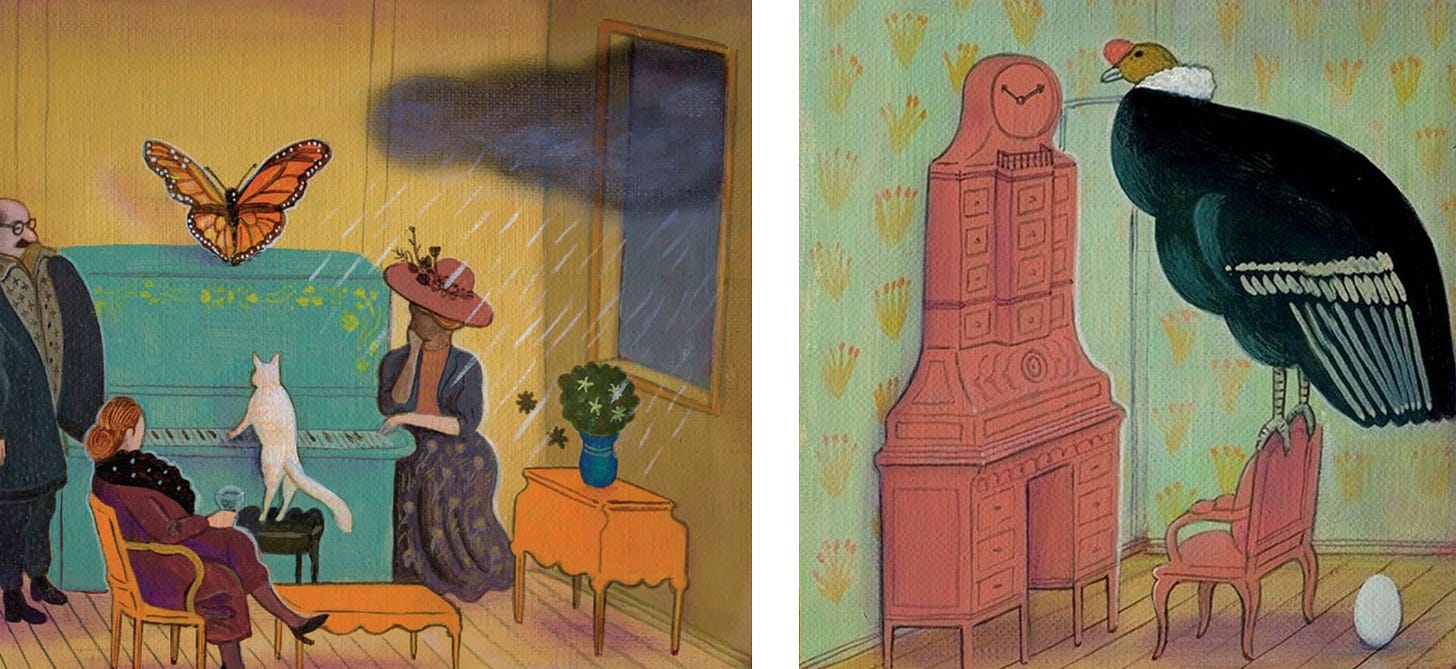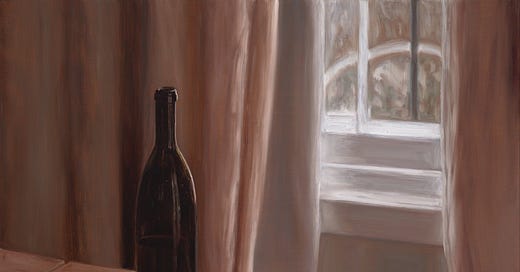Sweep it off the table like those small, twisted up pieces of eraser that always end up on the underside of your socks. An orange glow starts to bleed from the streetlight, over the side of the road and down the steps into your shadows; it doesn’t apologise for interrupting the early night. Ginger, rose, and cardamom are filtered through warm air and steam. A small red toy car left abandoned among dust and dead flies so you reach over to save it from a life of silence and realise that could have been you, sitting and waiting for a hand larger than your own to come and pluck you out from forgotten.
The darkness now tugs at the hem of your trousers, insistent. It looks up, tears welling in its eyes and you sigh, fold the book closed. “What are you reading?” it asks, suspicion pouring off its tongue like tea.
“Nothing.”
“But why can’t I see?”
“Because you won’t like it.” Darkness shrugs; never minded anyway. We walk back to the house, its tiny hand in mine, and as we turn the last corner I realise that it has rained, that all the plants will be smiling from ear to ear.
WORK-RELATED NEWS:
The Root Catalog column that I now write for Orion Magazine is on hold for an unusual, astonishing issue celebrating their forty year anniversary. It features a wide range of voices including Diane Ackerman, Barbara Kingsolver, Elizabeth Kolbert, J. Drew Lanham, Barry Lopez, John McPhee, Lulu Miller, and Maria Popova, and presents forty dreams and origin stories for the modern era. Its guest art director was Illustoria’s magical Beth Haidle, who made tender suggestions for my own illustrated essay within these pages, titled The Age of Noise.
If you have not read Orion before and you are comfortable with the idea that you might need to sit down and read slowly, read longer, read things that will make you feel—in the context of our planet and our place on it—remarkable but uncomfortable and put-together and put-apart then I cannot really stress the goodness and needed-ness of the publication enough. There is simply something different and wholly more powerful about reading things on paper, but there are a few excerpts from the issue on the website already too: Lulu Miller, Lacy M. Johnson, Kyo Maclear.

By the fall issue Root Catalog will be back to normal programming and I’m putting together a piece about rivers, a piece that I should likely be editing at this very moment but am not for reasons that look like boxes-still-to-unpack, like sun-is-out, like knowing a river just a few moments walk from the house the path beside which will carry me up into trees and steep gorge and views so far-reaching and mountainous it is hard to believe for just two minutes that people are capable of doing anything disastrous.
THIS WEEK I FELL IN LOVE WITH:
Once more I fell into a deep love (see also: newsletters No.156, No.148, and No.136) with work by Melbourne-based artist and musician Lucy Roleff—new paintings, new ways to fall in love.
“For many years, I have been moved by the blue at the far edge of what can be seen, that color of horizons, of remote mountain ranges, of anything far away. The color of that distance is the color of an emotion, the color of solitude and of desire, the color of there seen from here, the color of where you are not. And the color of where you can never go.”
— Rebecca Solnit, A Field Guide to Getting Lost
(The colours of where you are not and can never go are, I think, important and beautiful, and it’s good to be able to recognise them when they appear on horizons. Also because those colours are the colours of where other people are, where other people exist, and you can think about them living in those colours that are not your own, the beauty and unknowability and treasure of that.)














Hello Ella! See where your inspiring book has led me :)
https://cornersofthemind.substack.com/p/the-tsundoku-effect
Thank you!